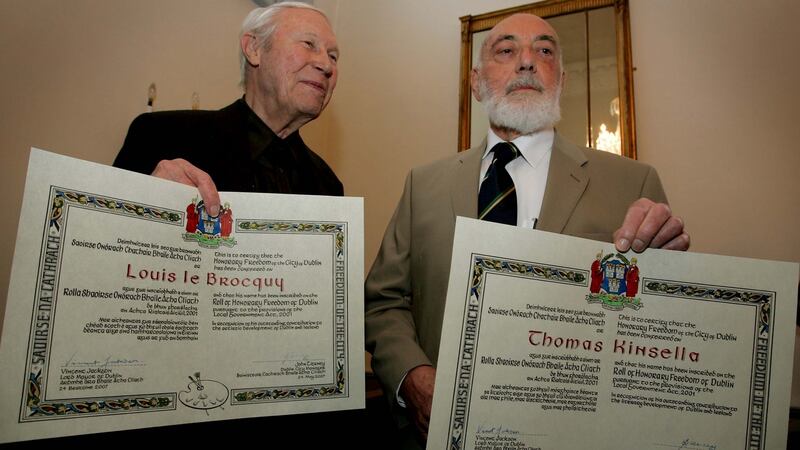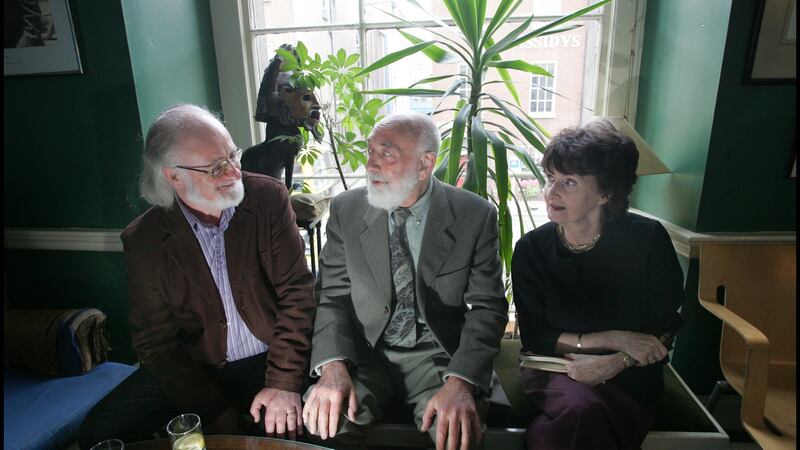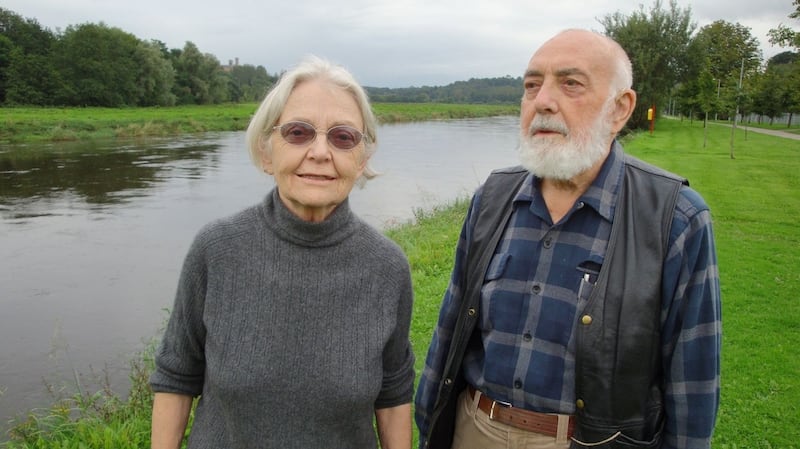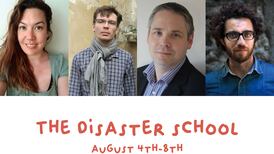The death has taken place in Dublin of the poet Thomas Kinsella. Kinsella, who was 93, had returned to his native city after many years teaching in universities in the United States. He was made a Freeman of Dublin in 2007 when a plaque was erected on his childhood home in Inchicore, an area that features in his poetry and for which he retained fond memories to the end of his life.

As well as receiving recognition for his own poetry, he was acclaimed for his translations from early Irish, notably his version of The Táin, in a collaboration with the artist Louis le Brocquy. One of his last public appearances was in 2018 when Trinity College conferred him with a Doctor in Letters for his lifetime achievement “as one of Ireland’s major 20th-century poets”.
That achievement began when, as the pre-eminent poet of a generation that emerged from the long shadow of Yeats, he published his first major collection, Another September, in 1958. Since then his many collections have drawn accolades from poets, critics and academics. The late Eavan Boland called him “ a glowing powerful source in Irish poetry”, while Dennis O’Driscoll described him as a poet who “is a true dissident: obstinate, inconvenient, discomfiting, essential”. It was those qualities of independence that distinguished him among his peers.

Kinsella’s work moves between the personal and the historical, with Dublin – and particularly the Inchicore-Kilmainham area where he was born and raised – at the heart of it. His range of poetic exploration stretches from the intimate settings of family, love and marriage to consideration of nationhood and identity, the abuse of political and bureaucratic power, the destruction of heritage as well as the role of the artist and the artistic act itself.
In his poetry Kinsella combined the direct vernacular of everyday speech with high artistic purpose and Joycean attention to detail. One of the chief concerns in his writing was its attention, often introspective, to the struggle of the individual with the ordeals of our daily human predicament, what he termed his “continuing engagement with reality”. He considered his writing as a way of finding “order” among the hazards of everyday survival.
His early career as a public servant in the Department of Finance, where he worked closely alongside the architect of economic reform, TK Whitaker, provided a vantage point that allowed him to look closely at the workings of the fledgling State and deeply into the heart of an Ireland that was changing in the 1960s.
This was an episode of his life that fertilised his investigative imagination and gave us the canonical long reflective poem, Nightwalker, in which he meditates on what he regarded as a betrayal of the original patriotic ideals of the founders of the new republic and a societal move in the direction of greed and materialism and the rise of the speculator. As well as its stream of consciousness technique derived from Joyce, the poem was notable for Kinsella’s shrewd and prescient observations of a young politician and future taoiseach, Charles Haughey.
The anger expressed in Butcher’s Dozen, his “necessary response” to the Widgery report on the 1972 Bloody Sunday killings in Derry has long since been vindicated. This poem was costly to the poet in terms of readership in some quarters, in particular in Britain where eminent critics had previously acclaimed him as the greatest Irish poet since Yeats, but Kinsella always placed uncompromising conviction before reputation.


When receiving Freedom of the City in Dublin’s City Hall, he reminded his audience that he has never forgotten that “Dublin gave many important things their first shape and content for me”. He was, in the words of critic Maria Johnston, “unquestionably the pre-eminent poet of modern Dublin”. Into his nineties he maintained his attachment to, as well as easy recall of, the places from his Dublin 8 childhood that left their mark on the future poet and became so important to the imaginative world of much of his poetry.
Memories of his working-class childhood permeate some of his most significant poems and sequences, from the early Dick King to later poems named after and located in very specific sites of personal memory from his early years: Irwin Street, Bow Lane, Phoenix Street, Phoenix Park, Model School, Inchicore. A poem of homage in memory of his father, The Messenger, is a powerful and unromantic depiction of the labouring life and the handing on of high ideals from father to son. In a commentary on the poem, Kinsella’s most astute reader, former UCD professor Maurice Harmon, said that the example of his father’s espousal of social issues left a permanent mark on his son.
In many of these evocative Dublin poems, he progressively charted his territories, mapping the city and what he called its “established personal places”. His achievement was far from confined to being a poet of locality: Old Harry deals with the spectre of the nuclear bomb and another long narrative poem, The Good Fight, with the John F Kennedy era and in particular, through its focus on Kennedy’s assassin Lee Harvey Oswald, on the psychology of the outsider in society.


For some readers the lyric voice and formal structure of his first poems, written under the influence of WH Auden, will be more familiar. He was the first living poet to be included in the school curriculum when two of his earlier poems, Another September and Mirror in February featured in the Soundings anthology of the 1970s.
As part of his awareness of what he called the “complicated cultural inheritance” of two languages, Kinsella also rescued and revitalised poetry from the Gaelic tradition, most notably that magnus opus of literary translation, The Táin, but also the poems of the dispossessed in An Dunaire.
His relationships with others were a catalyst for many of his poems. Perhaps the most significant among artistic friendships was the bond between Kinsella and musician and composer Seán Ó Riada, for whom he wrote the elegies, A Selected Life and A Vertical Man. But a central presence in many poems was his wife and muse, Eleanor. who died in 2017.
In reshaping and reinvigorating Irish poetry, and in a life dedicated to that purpose, he has never been afraid to challenge either himself or his readers. Kinsella stands with Joyce as one of the great innovators in modern Irish literature.
Gerard Smyth is Poetry Editor of The Irish Times













